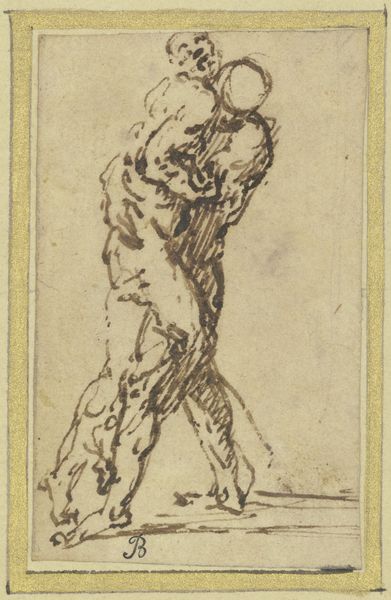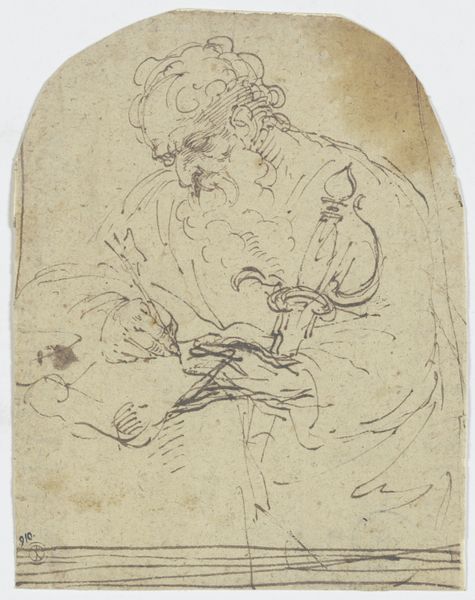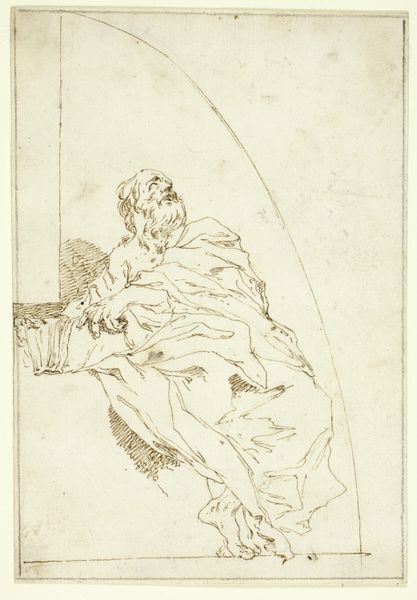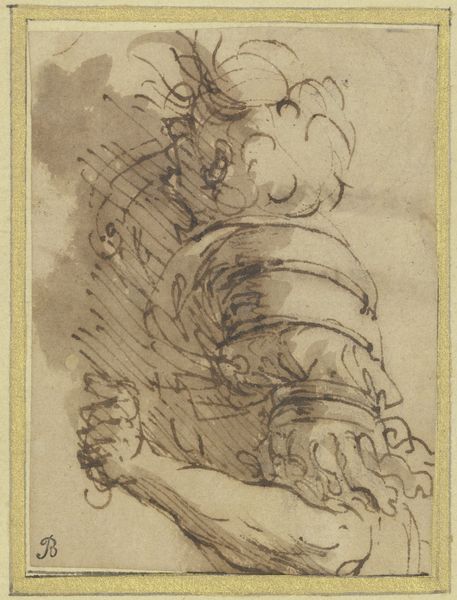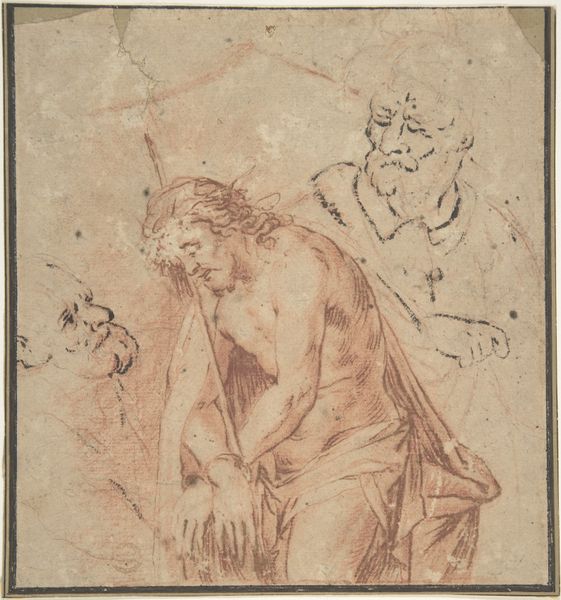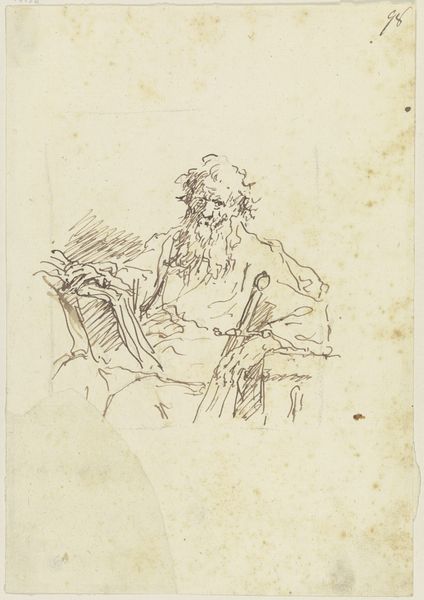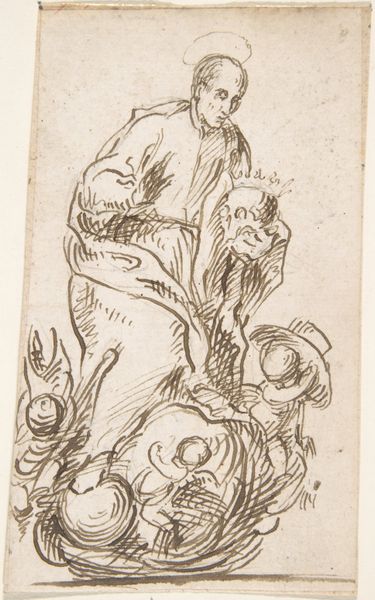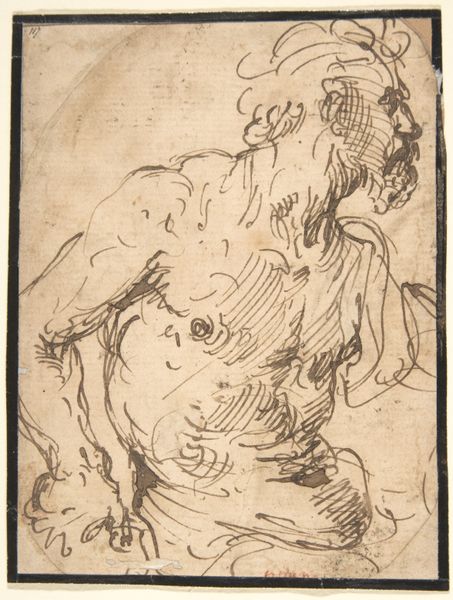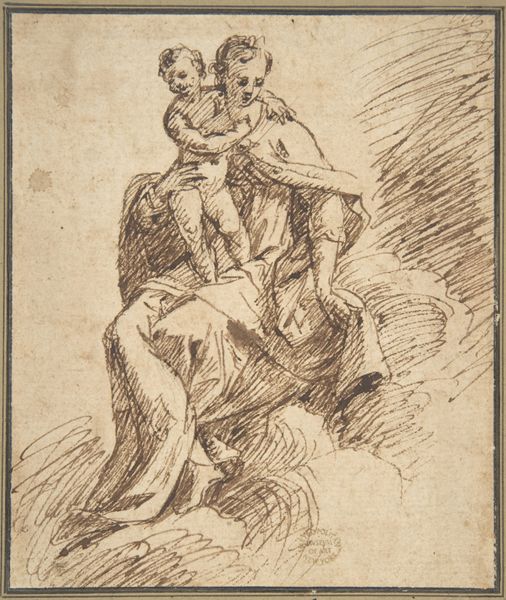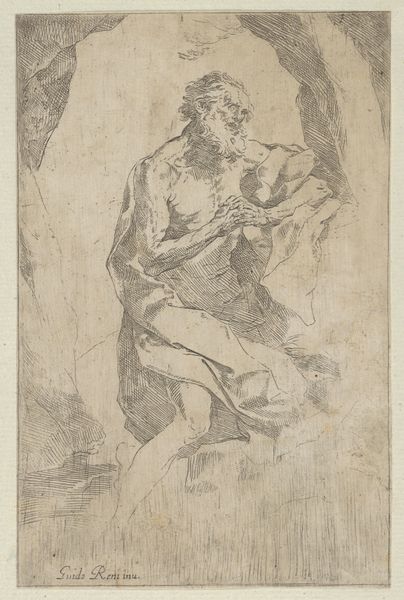
drawing, ink
#
portrait
#
drawing
#
baroque
#
figuration
#
ink
Copyright: Public Domain
Curator: Salvator Rosa's ink drawing, “A man seated against a block on the right,” dates from the 1660s and is currently housed here at the Städel Museum. Editor: It’s funny, my first reaction is of this weary old man. A sketch of exhaustion, somehow captured with this furiously energetic line work. Curator: The dynamism is classic Rosa. He was known for these energetic sketches—quick studies, really—that capture a powerful sense of movement. The Baroque love for drama! But it’s intriguing you say exhaustion, since he may represent a philosopher. Editor: Maybe it's not weariness so much as deep contemplation, a soul spent on thought. The way the lines kind of unravel around him feels so intimate and loose, it makes him feel relatable. Curator: I find it interesting to consider Rosa's career. He was a bit of a rebel in the art world. Refused to conform to academic standards, criticized the patronage system. He wanted art to be about feeling, about raw emotion. Editor: So this piece is almost like a visual manifesto? It feels so free. Like he just grabbed whatever ink was closest and started scratching out this figure in a fit of inspiration, almost a visceral record of an idea. Curator: Well, many argue this kind of work served a preparatory function. These studies would have prepared for more grand paintings or prints. Think about how such works become collected—it reveals the shift from a workshop production system to the beginnings of a modern idea about the autonomous value of a sketch, an artwork of its own. Editor: Whatever the intended role, the vulnerability on display here—the sketchy style, the informal pose. It just oozes this immediacy, like we’re glimpsing into Rosa's mind and catching him in the act of thinking, just for a fleeting second. Curator: True, a work like this shows us something special about artistic practice, a moment of unfiltered creation and thinking. Editor: It definitely leaves you pondering something…about art and its relationship to the artist's own vulnerabilities, and our relationship to the artwork as viewers invited in.
Comments
No comments
Be the first to comment and join the conversation on the ultimate creative platform.
